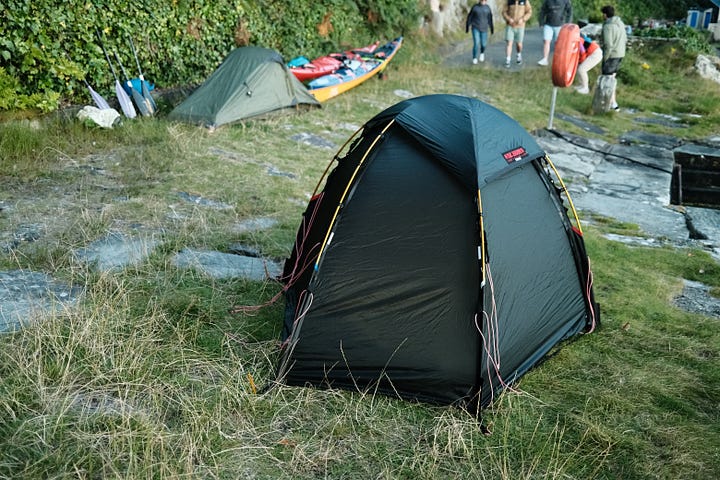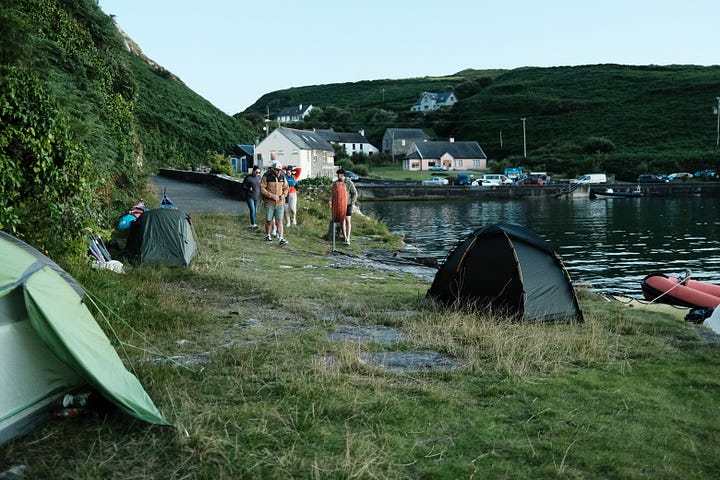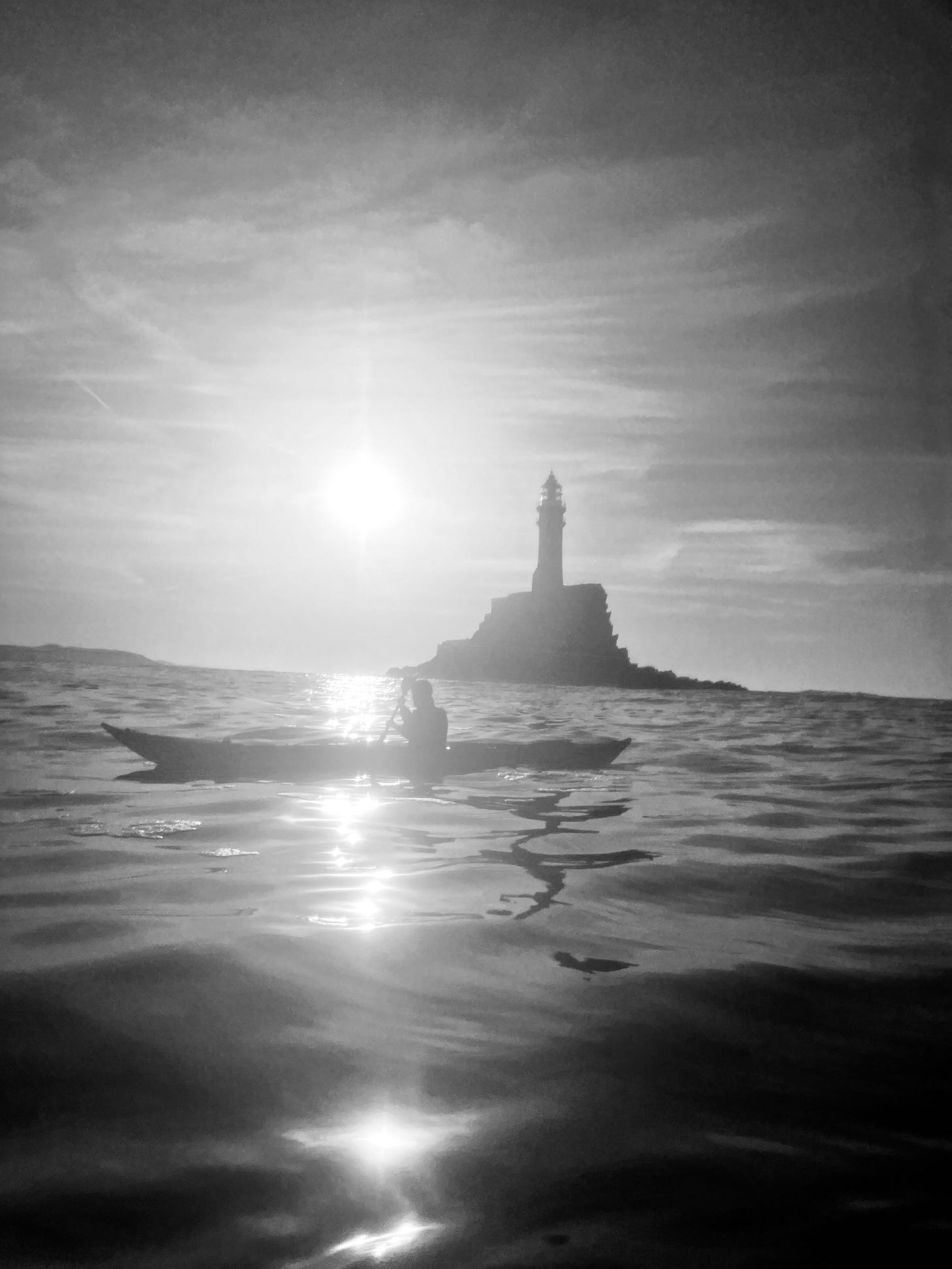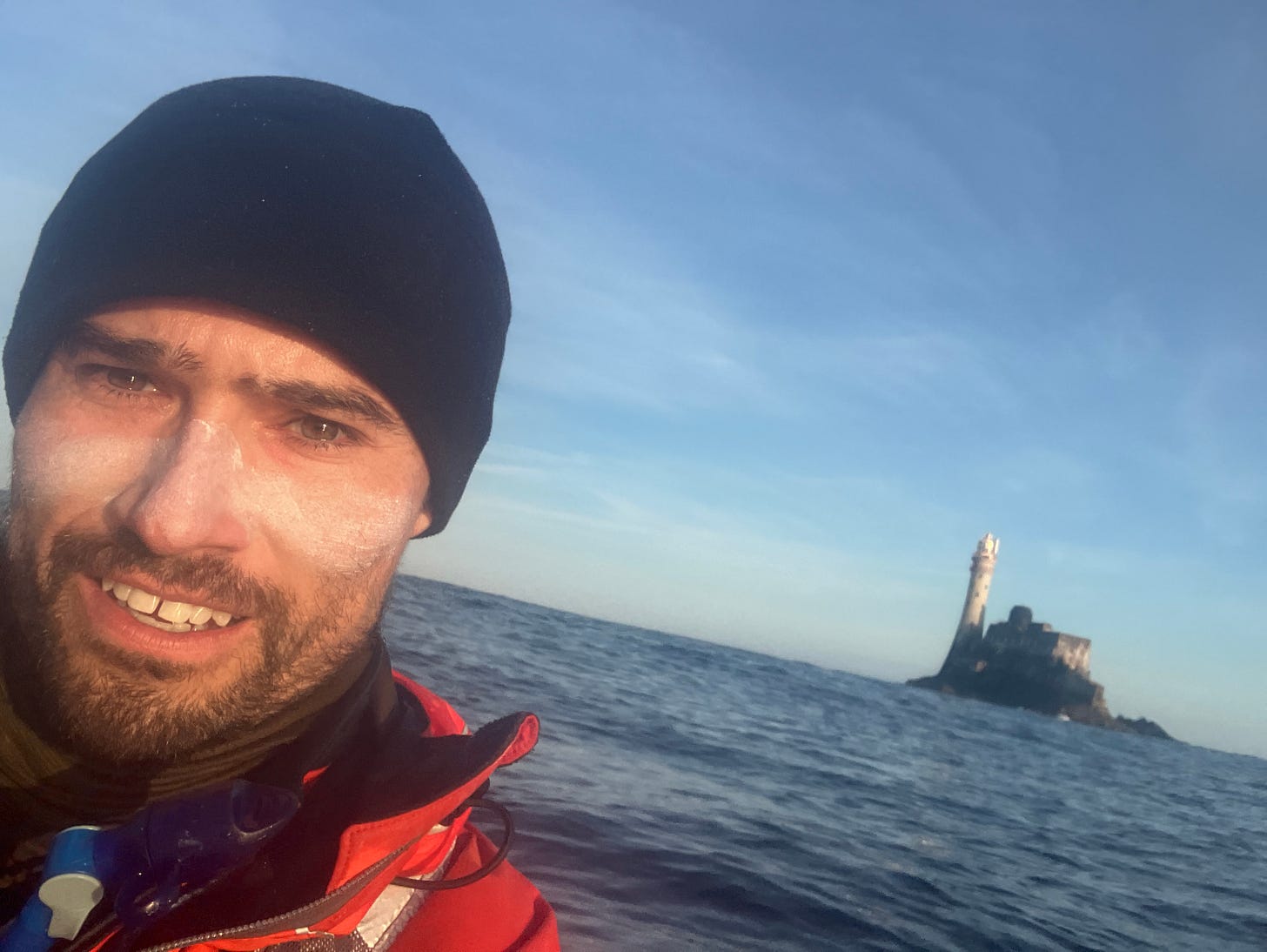Last weekend, my buddy Dan and I checked off the item at the top of my sea kayaking bucket list.
Anyone who got my text last Sunday morning would have instantly recognized the lighthouse in the photo and known what it means to get all the way out there in a kayak and how long I’ve been waiting to do so.
“Ireland’s Teardrop”
Fastnet is a lighthouse perched on a remote rock 13km off the Southwest coast of Ireland. The Irish name for the Fastnet, Carraig Aonair, means “lonely rock.” The Commissioner of Irish Lights describes the sad place the lighthouse occupied in the hearts of Irish immigrants through the years,
”Sentimentally known as ‘Ireland’s Teardrop,’ it was, for many thousands of emigrants, the last Irish structure seen as their ship carried them over the waves and away to new lives in America.”
My mom’s family was among those thousands. Of the men in my dad’s family who went over the horizon to fight in Flanders, only two would ever see Ireland’s Teardrop again.
Since 1925, The Lighthouse has been the turnaround point for The Fastnet Race——which starts and finishes in England——now the Rolex Fastnet Race, the oldest yacht race in the world. And the deadliest.
In the 1979 race, an intense freak storm capsized 75 boats, sank 5, and drowned 15 sailors, prompting the largest peacetime search and rescue operation in history. The disaster is documented in John Rousmaniere’s Fastnet Force 10, a must-read if you liked The Perfect Storm.
The Fastnet disaster rewrote the rules on heavy weather sailing and maritime search and rescue. In our sea survival training for the Lifeboat, we talked about lessons learned from 1979.
Today’s forecasting and weather modeling would likely have prevented the Fastnet disaster. Now, there’s even an X/Twitter account that tweets live conditions from the Light. But the main lesson of the storm remains true for anyone navigating these waters in a small boat: the finest summer day can turn nasty faster than you can get off the water. On an exposed paddle like Fastnet, there’s no room for error in your forecast or judgment of the conditions.
This is why it’s taken so long to make this trip happen, even though I live right around the corner from Fastnet. Like the summit of a mountain, the conditions out at the Light can be a no-go even when it’s pleasant everywhere else.
The Lonely Rock will let you know when she wants company.
“If ye don’t mind me snoring…”
Fastnet can be paddled out and back from the mainland, but Dan and I decided to camp on Cape Clear Island (Oileán Chléire) for a pre-dawn start, a favorable tide pushing us to Fastnet a little after sunrise, with a slingshot back to the mainland on the flooding tide. You couldn’t ask for a better setup. We had told no one about our trip but Dominique, Noelle, and the Coast Guard.
The crossing to Cape was lumpy, with a lingering swell and a fresh breeze that was meant to drop overnight. We could see the Fastnet the whole way and saw the white spray of the occasional boomer breaking at the base of the rock.
On Cape, the islanders drank garden pints and local gin in the warm summer evening with the crews of Dublin yachts and Baltimore powerboats. Club Cléire, the pub over the little general store in the harbour, was packed. We had a chill nightcap, Guinness for Dan, seltzer for me, and were in our tents obnoxiously early.


When we had pulled into the harbour, there were a couple of tents pitched on the patch of grass growing on the harbour wall where we were hoping to camp. One of the campers told us the campsite on the other side of the island was full. He didn’t mind us setting up next to him and his friends, “if ye don’t mind me snoring…”
I thought that was a figure of speech. Earplugs were on my packing list, and I forgot them.
Between the snoring man and the late crowd at the Club, all amplified by the way sounds seem closer in a tent, and my nerves for the morning, it was a long night.
When the wind dropped, as forecast, condensation settled, and it became a damp night.
Course to steer
We were up a little after 04:00, stowing gear and drinking coffee, careful not to wake our neighbors.
We were on the water at first light. The swell had dropped, not a breath of wind. The Fastnet was a go. The end of the tide carried us along while we kept up an easy cadence.
We passed the Bill of Cape Clear at sunrise, heading into a gentle swell out of the west-northwest. The exposure was thrilling. As we got closer to the Light, a RIB returning from a sunrise tour doubled back on her course to check if we were okay.
Landing on the Rock was a no-go. Too much swell. When we were as close as we were going to get, I rafted up to Dan, carefully removed the Pelican case containing my camera from my day hatch, and took a few snaps to supplement the foggy drybag shots I took with my phone. There were some impressive breakers dumping on the far side of the Rock. The shelf around the light jacked up the swell. I would hate to see this place on a bad day. I can’t imagine what it must have been like for the keepers before the Light was automated.
With the camera safely stowed, we started the long crossing to the mainland. The Light was not even our halfway point.
We followed a bearing to the beacon on Goat Island with a course to steer——I had calculated the night before——that had us aiming off slightly into the favorable flooding tide.
Just a long, gorgeous, empty. No boat traffic. A couple of dolphins, a couple of seals. Not too much chatter between us or in our heads.
We were back to our cars before 10:00 AM. A woman in the parking lot had a bunch of questions when we told her where we had come from. Maybe she could hear in our voices that it hadn’t sunk in yet for us.
Driving home, I pulled over at a bend in the road with a view of that jagged, lonely Teardrop on the horizon I had now seen the other side of.
P.S. When I’m not having adventures, I’m helping other people write about theirs. If you or someone in your circle has an amazing story to tell, I'd love to hear it. I have some availability for new ghostwriting and editing projects.
— Charlie
Kokatat is the official gear sponsor of The Lap.
The lap will be fueled by Resilient Nutrition’s Long Range Fuel and bars.
Expedition coffee by 3fe.
CH Marine will be providing a VHF radio and other safety equipment.
Camp kit and cooking gas provided by Paddle & Pitch. Trolley by KCS.
REAL Field Meals at a discount from Adventure.ie.














I loved reading about your bucket list adventure. I almost felt like I was there!
Wow, that was exciting!